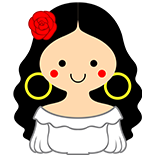Spanish grammar - The plural definite articles - los and las |
|||
|
|||
We previously saw the singular definite articles el and la. The plural forms are as follows: • The masculine plural definite article is los • The feminine plural definite article is las |
| Examples: | |
|
¿Dónde están los paraguas?
Where are the umbrellas?
|
|
|
Los hombres están aquí.
The men are here.
|
|
|
Las mujeres no están aquí.
The women are not here.
|
|
|
Los estudiantes están a tiempo.
The students are on time.
|
|
|
¿Dónde están las doce flores?
Where are the twelve flowers?
|
|
|
Los cinco franceses no están a tiempo.
The five Frenchmen are not on time.
|
|
|
¿Dónde están los ingleses?
Where are the English people (masculine)?
|
|
|
¿Por qué están los balones aquí?
Why are the balls here?
|
|
|
Los españoles son amables.
The Spanish (people) are kind.
|
|
|
Los ingleses están de acuerdo.
The English (people) are in agreement.
|
|
|
¿Por qué están los dos lápices allí?
Why are the two pencils over there?
|
|
 |
|



